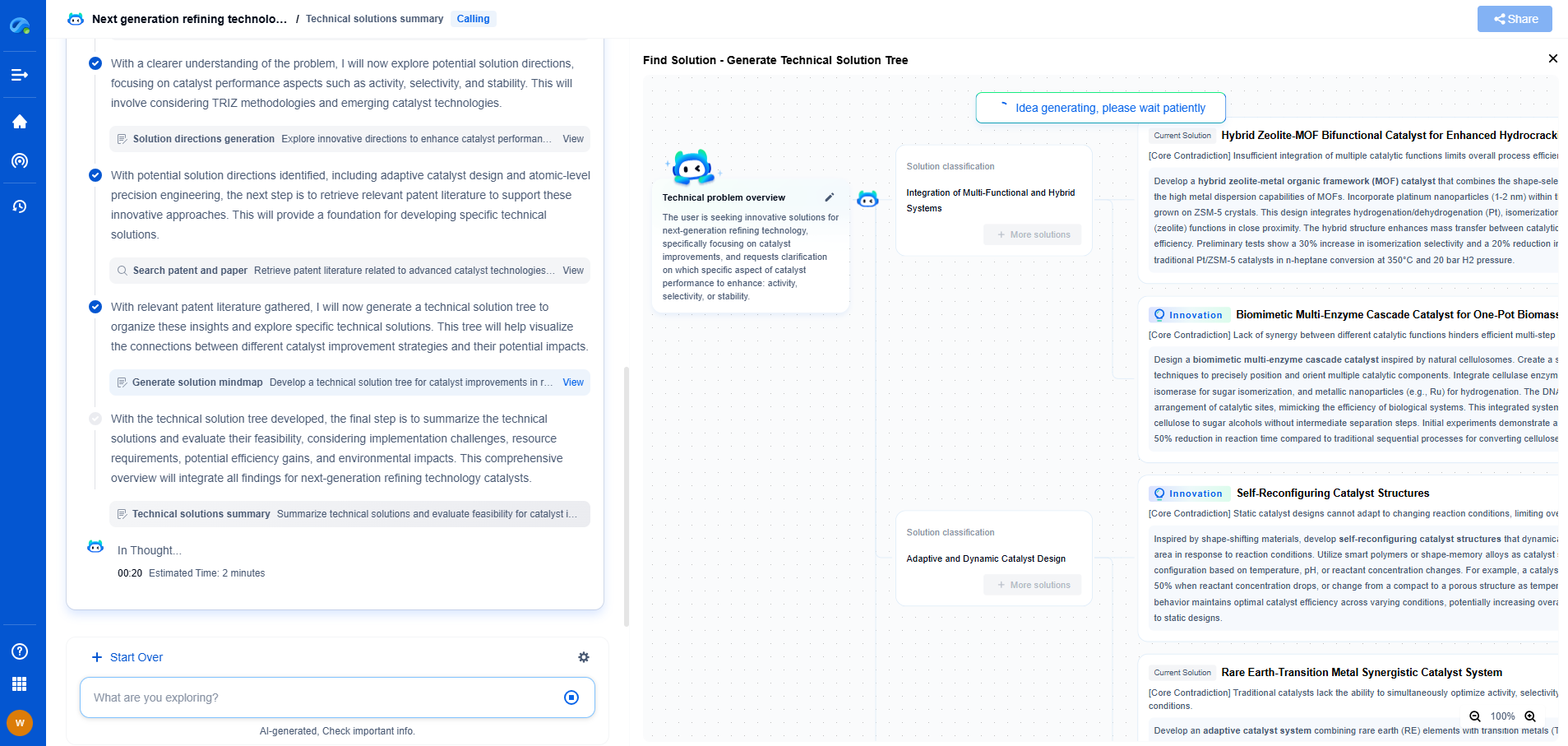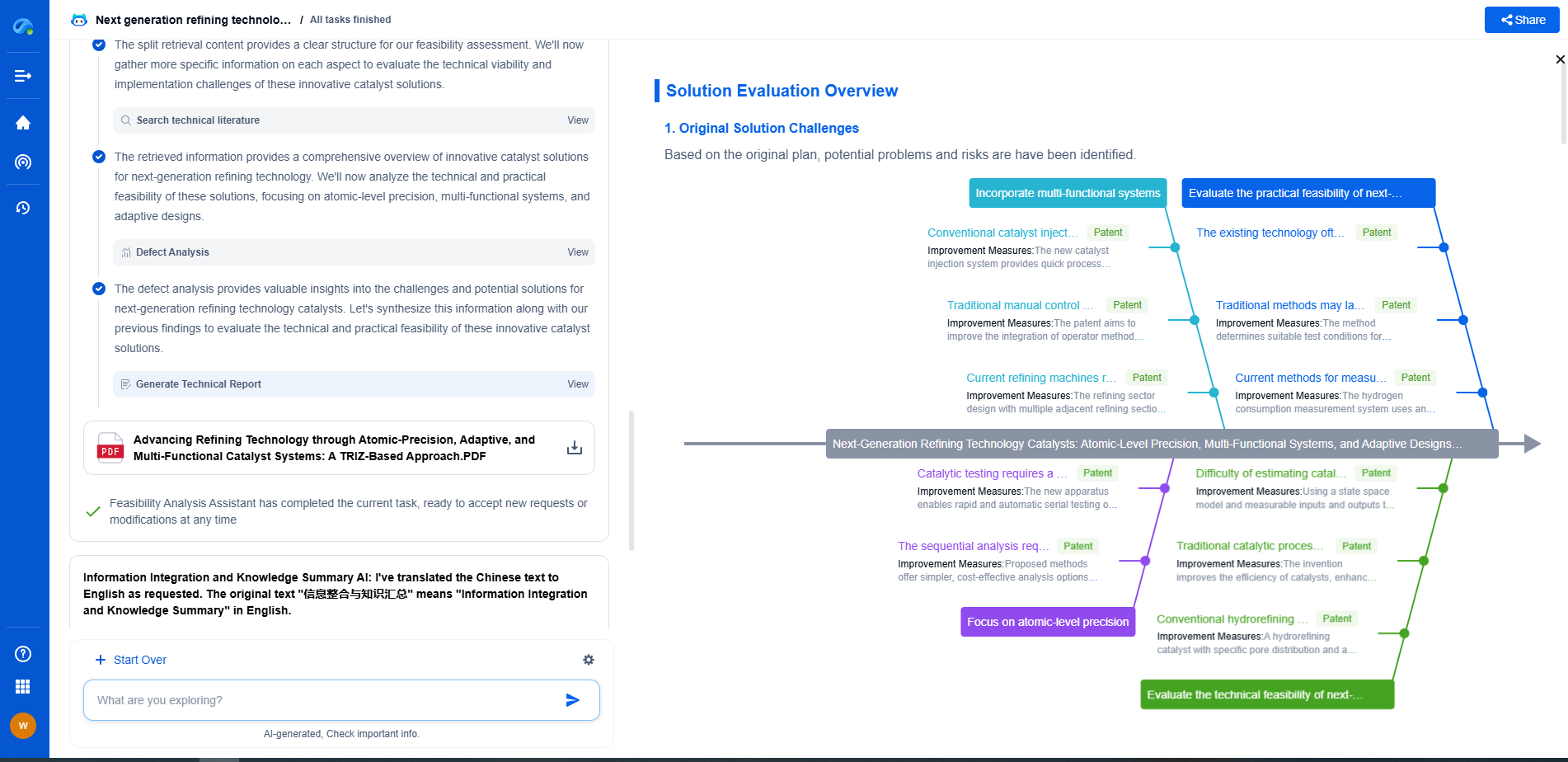Real-Time Monitoring Platforms for Wind Energy Integration
JUN 26, 2025 |
The Importance of Real-Time Monitoring in Wind Energy
Real-time monitoring platforms play an essential role in the effective integration of wind energy. They provide operators with up-to-the-minute data that is crucial for making informed decisions. Wind energy generation is inherently variable due to fluctuating weather conditions, and without accurate real-time data, it becomes challenging to maintain grid stability. These platforms help in predicting wind patterns and electricity production, thereby allowing grid operators to adjust and optimize power flow accordingly.
Key Features of Real-Time Monitoring Platforms
1. Data Collection and Analysis
Real-time monitoring platforms are equipped with advanced sensors and analytical tools that collect and process data from wind turbines and associated infrastructure. This data includes wind speed, direction, temperature, and turbine performance metrics. The platforms use sophisticated algorithms to analyze this data, providing insights that are vital for optimizing operations.
2. Predictive Maintenance
One of the standout features of real-time monitoring systems is their ability to predict maintenance needs before issues escalate into significant problems. By continuously monitoring turbine performance, these platforms can identify signs of wear and tear, enabling preemptive maintenance measures. This approach minimizes downtime and extends the lifespan of wind turbines, ensuring consistent energy production.
3. Grid Integration and Management
Real-time monitoring platforms facilitate seamless integration of wind energy into the power grid. They manage the balance between energy supply and demand by adjusting the output of wind farms in response to real-time grid conditions. This capability is crucial for maintaining grid stability and preventing overloads or blackouts.
4. Remote Monitoring and Control
With improvements in technology, operators can manage wind energy systems remotely. Real-time monitoring platforms allow for remote access to operational data, enabling operators to make adjustments and control systems from afar. This feature is particularly beneficial for wind farms located in remote or hard-to-reach areas.
Benefits of Implementing Real-Time Monitoring
1. Enhanced Efficiency
By providing accurate and timely information, real-time monitoring platforms enhance the overall efficiency of wind energy systems. Operators can make data-driven decisions to optimize energy production and minimize waste, leading to cost savings and increased profitability.
2. Improved Reliability
Real-time data ensures that grid operators can respond swiftly to changes in energy production, thereby improving the reliability of the power supply. This reliability is crucial for gaining consumer trust and fostering further adoption of wind energy.
3. Environmental Impact
Efficient integration of wind energy reduces reliance on fossil fuels, significantly lowering greenhouse gas emissions. Real-time monitoring platforms contribute to this by optimizing the use and storage of renewable energy, aligning with global sustainability goals.
4. Economic Advantages
The implementation of real-time monitoring platforms can reduce operational costs by optimizing maintenance schedules and preventing costly downtime. This economic advantage supports the financial viability of wind energy projects, encouraging further investment in renewable energy infrastructure.
Conclusion
Real-time monitoring platforms are indispensable tools in the integration of wind energy into modern power grids. They provide the necessary data and insights to address the inherent variability of wind power, ensuring efficient, reliable, and sustainable energy production. As the demand for renewable energy continues to rise, the role of these platforms will only become more critical, driving innovation and supporting the transition to a cleaner energy future.
Empower Your Wind Power Innovation with AI
In the fast-evolving landscape of wind turbine technology—where aerodynamic optimization, generator efficiency, and structural innovation are critical—staying ahead requires more than just expertise. It requires intelligent tools that accelerate R&D and protect your competitive edge.
Patsnap Eureka is your AI-powered research assistant, designed specifically for innovators like you working at the forefront of Wind Motors. Whether you're analyzing blade design trends, exploring novel gearbox architectures, or navigating complex global patent landscapes, Eureka streamlines the entire process with precision and speed.
👉 Experience how Patsnap Eureka can revolutionize your R&D and IP strategy. Request a demo today and power up your next breakthrough.
- R&D
- Intellectual Property
- Life Sciences
- Materials
- Tech Scout
- Unparalleled Data Quality
- Higher Quality Content
- 60% Fewer Hallucinations
Browse by: Latest US Patents, China's latest patents, Technical Efficacy Thesaurus, Application Domain, Technology Topic, Popular Technical Reports.
© 2025 PatSnap. All rights reserved.Legal|Privacy policy|Modern Slavery Act Transparency Statement|Sitemap|About US| Contact US: help@patsnap.com

